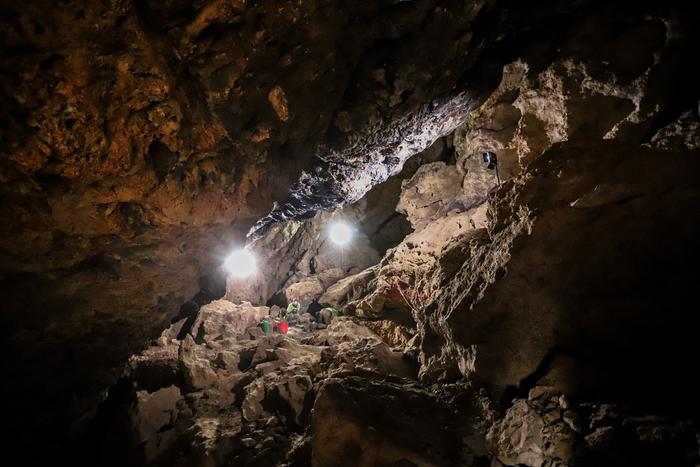Granada, Spain: 9,500-Year-Old Plant-Based Baskets And Sandals Found
A new analysis of the exceptionally preserved plant-based artifacts in the Cueva de los Murciélagos, published in the journal Science Advances, offer a unique lens into prehistoric societies. While plant material culture serves as an insightful source of understanding these societies, its perishable nature often acts as a roadblock. This archaeological goldmine, located in southern Iberia, stands out due to its impeccable preservation of organic materials.
/cloudfront-eu-central-1.images.arcpublishing.com/prisa/BJDRZMZ2HBHJXHUJTKOW33NRYM.jpg)
Historical Overview and Discoveries:
First unearthed in the 19th century due to mining activities, the cave revealed a treasure trove of partially mummified corpses, wooden tools, basketry, and other plant-based artifacts. Early critiques questioned the authenticity and chronology of the finds. However, radiocarbon dating affirmed the Neolithic origin of these artifacts, subsequently finding a home in museum collections.

SCIENCE ADVANCES
Mesolithic organic-based artifacts.
(A) Basket 579 (Beta-627332: 8350 ± 30 BP). (B) Basket 580 (Beta-627333: 8320 ± 30 BP). (C) Basket 581 (Beta-627334: 8300 ± 30 BP). (D) 626 Linked rings (Beta-628426: 8400 ± 30 BP).
Chronological Assessment:
An analysis of the perishable items painted a chronological narrative of the site, spotlighting the evolution of plant-based technologies. With the evidence suggesting both Mesolithic and Neolithic production, the site boasts a diverse range of plant-based footwear.
Significance of Preservation:
Good preservation of such materials in southern Europe is a rarity, often contingent on unique conditions like waterlogging, charring, or desiccation. Among such well-preserved sites like La Marmotta and La Draga, Cueva de los Murciélagos is renowned for desiccation-preserved organic materials. The cave’s peculiar geology—being a karstic entity situated on gray limestone fractured by Alpine tectonics—paired with its air circulation, inhibit bacterial growth, ensuring preservation.

The Assemblage:
The cave housed 76 distinct objects, encompassing wooden items, reed pieces, and fiber-based artifacts. Esparto grass, identified by its unique microscopic features, was prominently used in baskets and cordage, undergoing varied processing techniques like crushing and fermentation.
Use-Wear Analysis:
Two prominent wooden items—a pointed stick and a mallet—displayed clear use-wear marks, implying their utility in tasks like crushing fibers.
Basketry and Footwear:
Various basketry techniques, including twining, coiling, and pseudobraided/cofin methods, were evident. Additionally, cords integral to other items, such as sandals, were found. The site unveiled two kinds of sandals: simple and central core.

SCIENCE ADVANCES
Neolithic organic-based artifacts dated in previous work with detail of damage.
The white dashed line shows the portion of the object now lost. (A) Basket fragment 616a (CSIC-1132: 5861 ± 48 BP). (B) Sandal 598 (CSIC-1133: 6086 ± 45 BP). (C) Sandal 609 (CSIC-1134: 5900 ± 38 BP) (32, 37).
Chronology and Modeling:

Radiocarbon dating pins the commencement of plant-based artifact deposition to around 7950-7360 cal BCE, ending near 4370-3740 cal BCE. Two distinct deposition phases were discernible, separated by a 2000-year hiatus. Interestingly, these phases correlated with different socioeconomic structures: early Holocene hunter-gatherers and Middle Holocene agriculturalists.
The artifacts, especially the unique 3D twined baskets from the Mesolithic era adorned with geometric dyed motifs, and the Neolithic braided basket or bag, spotlight the intricate technological prowess of these ancient societies. With added evidence like potentially bowstring-indicative cords, the Cueva de los Murciélagos stands as a testament to the indispensability of perishable organic materials in piecing together our past. Through it, we gain deeper insights into ancient human adaptations, their technological advancements, and their multifaceted relationships with the environment.
Related Post
A shocking documentary proves that mermaids do exist
SHOCKING Revelation: Thuya, Mother of Queen Tiye, Was the Grandmother of Akhenaten and Tutankhamun—What Ancient Egyptian Secrets Did She Leave Behind?
Breaking News: Astonishing Discoveries at Karahan Tepe Confirm an Extraterrestrial Civilization is Hiding on Earth, and NO ONE Knows!
Breaking News: Researchers FINALLY Discover U.S. Navy Flight 19 After 75 Years Lost in the Bermuda Triangle!
NASA’s Secret Investigation: Uncovering the Astonishing Mystery of the UFO Crash on the Mountain!
Explosive UFO Docs LEAKED: Startling Proof That Aliens Ruled Ancient Egypt!